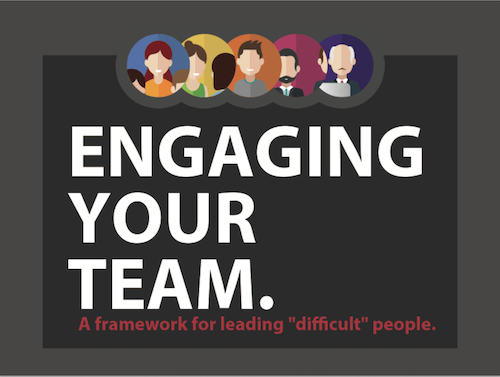John? Is that you? Photo by Jenny Hill on Unsplash
Old Guard and New Vanguard
“Newbie,” John thought as he rounded the track and watched Tyler animatedly talk to one after another runner about his “love” of being a runner. He noted Tyler’s Salmon “Ultra Pro” blue and red shoes, neon-green Fitbit, Rockay running socks, Smart Wool running gloves, and matching headband.John looked down at his own clothes . . . dependable Nike shoes, almost five years old, a no-name line of shorts, tee-shirt, and stocking cap. He’d bet that his whole wardrobe, bought at a “big-box store,” maybe with the shoes excepted, cost less than the price Tyler forked over to Smart Wool.
Tyler barely gave John a thought. Oh, John was always there, this 50-somethingish road-ghoul, finishing his morning run with a few final laps and warm-down on the track. John looked, to Tyler, like a burned-out, uninviting, “road warrior” who wasn’t likely to be a source of encouragement or inspiration—simply someone doing what he did, for some unknown, but internally-motivated reason—without a sense of the great synergy of involvement in a broader running community.
Tyler, a 30-ish millennial, who came to running as a pastime last year, could draw a crowd. His animated excitement—whether talking about his observations on running shoes, the latest on Runblogger, or heart rate variability—was palpable and infectious. Other’s attempting to re-engage with a more active life-style or to develop a love of running loved to come along side and listen.
If pushed, John might admit that he held some distain for Tyler. He might have, in his less charitable moments, thought, “We’ll see how long he lasts.” Tyler conversely may also, if his psyche were plumbed, acknowledge that John, to him, was the embodiment of what he did not want his running to become—one more joyless chore he did because it was “good for him.”
Leaders—Old and New
Too often, this is the picture of leadership—where generational differences turn into “attribution errors;” ie; “John is burned out and no longer has a passion for running!” (Really? How will you look after decades of running?), or “Tyler is a flash in the pan, and not serious!” (Were you not excited when you first started?)
I got to watch this play out annually when I was growing up. As the son of the Academic Vice President of a small college (enrollment of 500) I watched wave after wave of new students come to college, young leaders emerge, and the annual tug-of-war—sometimes in minor ways, sometimes in a noisy visible crash—between the generations play out. I also saw, behind the scenes, the dedicated service of the staff, faculty, and leadership as they sought to guide, harness, and lead these energized and idealistic youth into success—with patience and understanding of the “youngster’s needs to find their own way.” At times it wasn’t pretty.
One student, whose passion at the time was an electric guitar—and today, is a retired grandpa—told me about how my Dad was called out of bed at 3 in the morning due to neighbors complaining about the loud rock music blaring from on campus. My father, all 6’3” probably bristling from head to toe—strode into a performance hall, unplugged the speakers, and announced, “Now, do want to clear out this equipment, or do you want me to confiscate it?” The student admits this led to a “dust up” with my Dad, (which he lost and eventually, decided it was prudent to dismantle the equipment himself). I remember the tears in this grandpa’s eyes when, upon my Dad’s death, he commented that it was my Dad, among others, who taught him, how to be a man of integrity. (BTW- Dad was the source of the greatest leadership act I ever witnessed--doing nothing!)
This week, I was back “home” where I grew up. A guy stopped me, introduced himself, and asked who I was. I told him. “Your father and your brother Kirk changed my life,” he told me. Your Dad’s class and your brother’s example as my Resident Assistant in the dorm showed me something I hadn’t experienced before—caring and strength.” I know. Both of them, my Dad and my brother, would not compromise on two things--caring for the person and following their principles. At least where young men were concerned, they knew how to see beyond the behavior and see the person, in context, and with an understanding of what was needed at that time . . . an encouraging word or a kick in the amp.
Lesson for Old or New (Don’t manage by fear or control!)
Maybe somebody has said what I am writing below, or something similar, somewhere . . . but I couldn’t find it on-line. So here is my shot at a “truism” about what happens too often between the old and new leaders (someone should make into a profound and pithy quote).
“We blame those we cannot understand, attributing to them motivations we create, and judging those motivations insufficient, incorrect, or morally deficient; thus, invalidating their right to choose and proclaiming our right to judge.” ~ Bryan Miller
It take great courage, strength, and wisdom to lead when others think you are headed in the wrong direction. It is when the “heat is on” or a crisis manifests itself that leaders are most severely judged—for good or bad. The disagreements may be the result of something as simple as a difference in age, philosophy, learning history, or other factors—like how loud music should be played at 3 am. Creating respect comes through the strength of presenting a caring and principled approach that will, in the long-run, garner the support and the following leaders need to “grow up” new leaders who can maximize their human systems to reach organizational or team goals.
Additional resources:
Lessons Learned Around the World: People-centered leadership. A. Keith Miller, Major, USAF (Ret.)
Engage Your Team: A framework for leading “difficult” people. Bryan G. Miller, Ph.D.
Contact us with questions. Thanks for sharing and commenting!

































